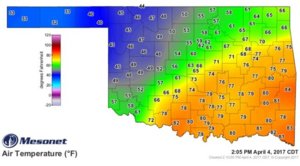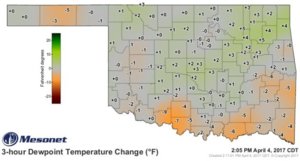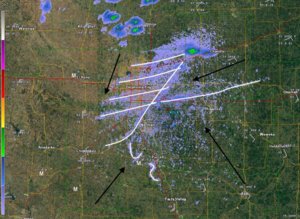Can't really call this a "sleeper" event given the obvious synoptic signal, but last night's and this morning's CAMs are showing a pretty strong signal for severe weather across the eastern central Plains tomorrow, which SPC hasn't exactly highlighted as much of an event, with only a marginal risk painted for it. Personally I see indications of a more significant event.
The NAM shows a mid-level jet streak rounding the base of a progressive shortwave, and rapid cyclogenesis begins overnight over the southern Plains. Moisture will not really return much for this system, but the recent system hasn't exactly scoured the moisture either, as 50s dewpoints are currently in place across the threat area, and soils in Oklahoma are very wet following a rather wet week, so moisture may not be a huge problem. Clouds don't look to be a huge problem, either, so MLCAPE of 1000-2000 J/kg looks pretty likely. Deep shear certainly won't be a problem. Low level wind fields respond nicely to the rapid cyclogenesis, so low-level shear should be sufficient. I pulled up some NAM soundings showing impressive hodographs.
Questionable aspects of this setup include just how much moisture we end up getting and storm coverage. CAMs are widely varying in storm mode and location. Not all modeled storms are forming on the cold front. So targeting could be a cause for chase failure. Also, the setup is a tad further east than I would prefer, mainly east of I-35, but not all the way into the jungles of AR/MO (at least, part of the event isn't).
Worth paying attention to.
ADD: just after posting this, I see SPC upgraded to slight for tomorrow. Seems very reasonable.
The NAM shows a mid-level jet streak rounding the base of a progressive shortwave, and rapid cyclogenesis begins overnight over the southern Plains. Moisture will not really return much for this system, but the recent system hasn't exactly scoured the moisture either, as 50s dewpoints are currently in place across the threat area, and soils in Oklahoma are very wet following a rather wet week, so moisture may not be a huge problem. Clouds don't look to be a huge problem, either, so MLCAPE of 1000-2000 J/kg looks pretty likely. Deep shear certainly won't be a problem. Low level wind fields respond nicely to the rapid cyclogenesis, so low-level shear should be sufficient. I pulled up some NAM soundings showing impressive hodographs.
Questionable aspects of this setup include just how much moisture we end up getting and storm coverage. CAMs are widely varying in storm mode and location. Not all modeled storms are forming on the cold front. So targeting could be a cause for chase failure. Also, the setup is a tad further east than I would prefer, mainly east of I-35, but not all the way into the jungles of AR/MO (at least, part of the event isn't).
Worth paying attention to.
ADD: just after posting this, I see SPC upgraded to slight for tomorrow. Seems very reasonable.




